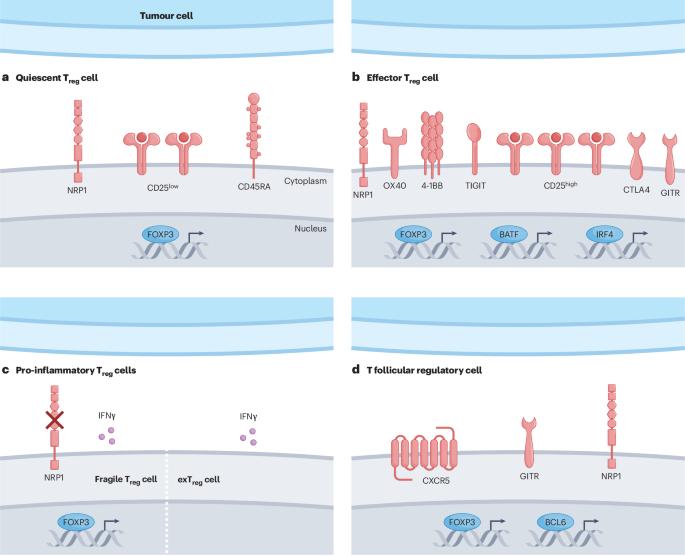Regulatory T cells in the tumour microenvironment
IF 66.8
1区 医学
Q1 ONCOLOGY
引用次数: 0
Abstract
The powerful suppressive capabilities of regulatory T (Treg) cells and their appreciable contribution to tumour progression make them attractive immunotherapeutic targets. However, their role in systemic immune homeostasis makes it important to find ways to specifically target tumour-infiltrating Treg cells while leaving the wider system unperturbed. It is also unknown whether therapies depleting or disrupting the function of tumour-infiltrating Treg cells will provide the greatest efficacy while limiting immune-related adverse events. In addition, Treg cells share much of their biology with conventional CD4+ T cells, introducing challenges when designing targeted immunotherapies. In this Review, we discuss recent advances in differentiating tumour-infiltrating Treg cells from their systemic and tissue-resident counterparts and understanding how the biology of tumour-infiltrating Treg cells differs from conventional CD4+ T cells. We also discuss how recent technological advances may enable the study of tumour-infiltrating Treg cells in even greater detail, helping to identify new targets for next-generation immunotherapeutic drugs. This Review by Imianowski et al. outlines the various contributions that regulatory T cells, present in the tumour microenvironment, make towards tumour progression and highlight the ways in which they represent attractive next-generation immunotherapeutic targets.


肿瘤微环境中的调节性T细胞
调节性T (Treg)细胞强大的抑制能力及其对肿瘤进展的显著贡献使其成为有吸引力的免疫治疗靶点。然而,它们在全身免疫稳态中的作用使得找到特异性靶向肿瘤浸润性Treg细胞的方法变得重要,同时使更广泛的系统不受干扰。目前还不清楚消耗或破坏肿瘤浸润Treg细胞功能的治疗方法是否能在限制免疫相关不良事件的同时提供最大的疗效。此外,Treg细胞与传统的CD4+ T细胞具有许多相同的生物学特性,这给设计靶向免疫疗法带来了挑战。在这篇综述中,我们讨论了在区分肿瘤浸润性Treg细胞与它们的系统和组织常驻细胞方面的最新进展,并了解肿瘤浸润性Treg细胞与常规CD4+ T细胞的生物学差异。我们还讨论了最近的技术进步如何能够更详细地研究肿瘤浸润性Treg细胞,帮助确定下一代免疫治疗药物的新靶点。
本文章由计算机程序翻译,如有差异,请以英文原文为准。
求助全文
约1分钟内获得全文
求助全文
来源期刊

Nature Reviews Cancer
医学-肿瘤学
CiteScore
111.90
自引率
0.40%
发文量
97
审稿时长
6-12 weeks
期刊介绍:
Nature Reviews Cancer, a part of the Nature Reviews portfolio of journals, aims to be the premier source of reviews and commentaries for the scientific communities it serves. The correct abbreviation for abstracting and indexing purposes is Nat. Rev. Cancer. The international standard serial numbers (ISSN) for Nature Reviews Cancer are 1474-175X (print) and 1474-1768 (online). Unlike other journals, Nature Reviews Cancer does not have an external editorial board. Instead, all editorial decisions are made by a team of full-time professional editors who are PhD-level scientists. The journal publishes Research Highlights, Comments, Reviews, and Perspectives relevant to cancer researchers, ensuring that the articles reach the widest possible audience due to their broad scope.
 求助内容:
求助内容: 应助结果提醒方式:
应助结果提醒方式:


